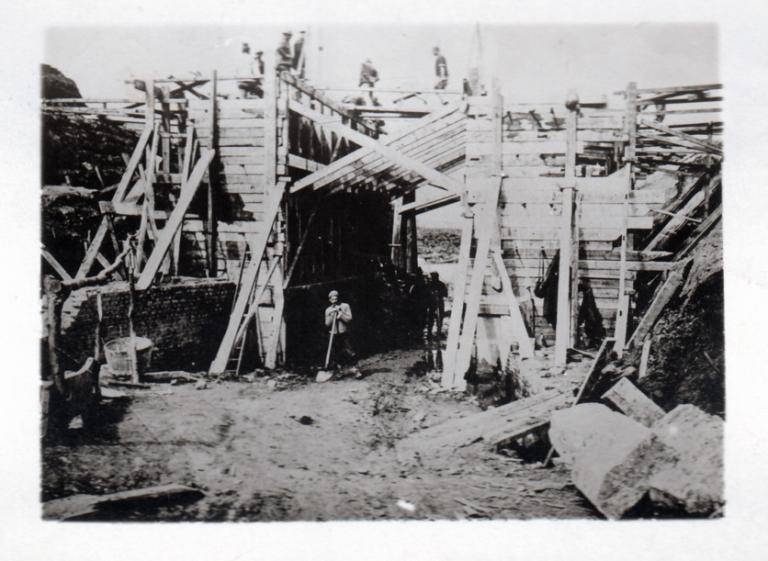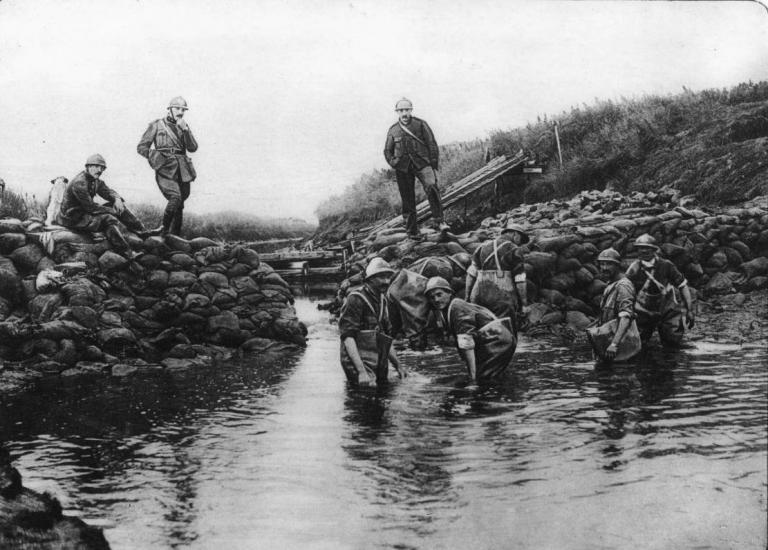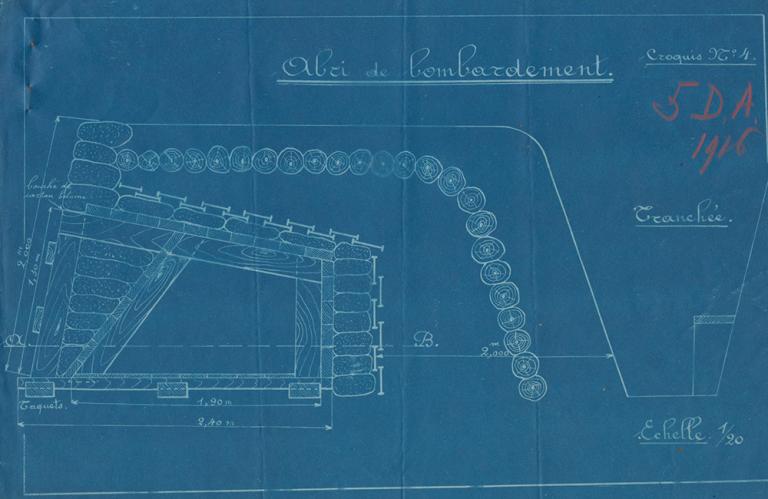The Engineers
In 1913 the army went through major restructurings and military service was generalized in order to reinforce the field army. In addition to the Fortification Engineers (one regiment in Antwerp and one battalion in Liège and Namur), six engineer battalions were created to support the six new army divisions. A Pioneering-Bridging-Cycling Company was formed to assist the Cavalry Division. The fortified towns and barracks, except for the three Fortified Positions of Antwerp, Liège and Namur, were no longer managed by the Engineering and Fortifications Service but came under the Ministry of Public Works. Its officers were added to those of the new units and staffs.

In August 1914, the Engineers were also composed of five specialized companies intended to assist the Fortification and Field Engineers: balloonists with kite balloons, aviators with Farman aircraft for long distance observation, telegraphists in charge of telephone lines and wireless telegraphic liaison (T.S.F. - télégraphie sans fil), railway troops for laying and repairing railway lines and bridges, and finally the torpedo corps to defend the Scheldt north of Antwerp.
At that time the Fortification Engineers included Sappers and Miners, Pontoniers as well as Searchlight Units, each of them provided with a telegraph section.

After mobilization at the end of July 1914, the Engineers began building pontoon bridges in Liège and Namur to connect both sides of the river, while destroying a large number of fixed bridges across the Meuse and the Sambre. Railway tunnels were obstructed and the areas of free space between the forts of the Fortified Positions were reinforced. During the first months of war, lots of engineers were also deployed as infantrymen on the front line.
After September 1914, the Engineers Railway Company organized raids with armoured trains coming from Antwerp to destroy bridges or support operations. It also obstructed railway lines with driverless “ghost trains”.

After the fall of Antwerp and the withdrawal of the field army to the Yser, the Engineers flooded the Yser plain and in this way contributed to the victory of our worn-out army in the Battle of the Yser in October 1914. In 1916 the Flood-Control Service created in Nieuwpoort was transformed into the Pontoon Builders Company (Compagnie de sapeurs-pontonniers). In order to control the flooding, it maintained and often repaired the hydraulic structures, especially the Nieuwpoort locks, throughout the war.
The stabilization of the Belgian front led to new reorganizations within the Engineering Corps: the torpedo corps disappeared, the units of Fortification Engineers formed a second engineer battalion per army division. In December 1916, both battalions were merged into one engineer regiment.

In 1916 a second Pioneering-Bridging-Cycling Company was created to support the 2nd Cavalry Division and the Company of Aviators was now referred to as Military Aviation. The Telegraph Company and sections amalgamated into the units of the Signal Corps. The Engineers Railway Troops laid hundreds of kilometres of by-roads and single-track railways and were eventually brought to battalion level.
The Directorate of Engineering, established within the Main General Headquarters in August 1915 in order to coordinate the support given by the Engineers to the field army, became the Engineer Command in 1917.
Our army’s huge protection, accommodation and mobility needs led to the creation of various Companies of Auxiliary Engineer Troops (TAG - Troupes Auxiliaires du Génie) supervised by engineer officers.
In the summer of 1918, the Belgian army was reorganized in order to prepare for the offensive. From that moment on, the six army divisions were composed of two Infantry Divisions. Both of these were supported by an engineer battalion while a third battalion was made up of Companies of Auxiliary Engineer Troops. In the final offensive the Engineers removed obstacles placed by the Germans and built bridges and roads of wooden planks to ensure the mobility of our troops.
After the armistice was signed, part of the Engineers accompanied the occupying troops sent back to Germany while numerous other units were deployed to rebuild the country and to clear the ruins in bombed-out areas.
The Engineers had become an official branch of the army. After the war their units were offered a pennant bearing the honourable mentions received from His Majesty King Albert. (Thanks to Musée du Génie - 5100 Jambes – www.geniemus.be)

